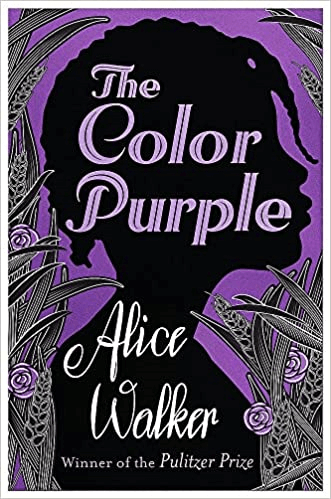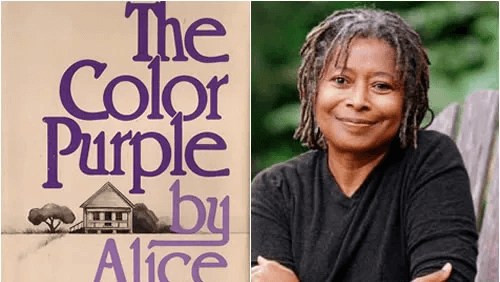The Color Purple SummaryIntroductionMore than just images of raisins, eggplants, and that strange McDonald's mascot are included in this book. It features Celie, a depressed black lady from the southern countryside, and follows her for nearly thirty years, from her father repeatedly abusing her as a child to her husband abusing her even more as an adult. The first few pages of this book make it quite evident that sometimes life simply isn't fair. Fortunately, Celie eventually becomes stronger and realizes her independence with the support of a few close friends and her unbreakable spirit. 
An otherwise extremely tough and touching narrative has a pleasant conclusion. The novel was so affecting that it earned author Alice Walker both the 1983 National Novel Award and a Pulitzer Prize for Fiction. You know, they don't just give those to anyone. Despite the undoubted influence that the novel has had on readers all over the world, it is still frequently prohibited today, more than thirty years after it was first published, due to its homophobia, abusive language, and additional sexually explicit content. About The AuthorAmerican author Alice Walker, whose full name is Alice Malsenior Walker, was born in Eatonton, Georgia, on February 9, 1944. Her books of poetry, short tales, and novels are renowned for their penetrating portrayals of African American culture. Her books specifically target women, most notably The Colour Purple (1982). Through the publication of The Colour Purple, which also took home the National Book Award, Walker made history by becoming the very first African-American woman to be awarded the Pulitzer Prize for fiction. Her other books include The Meridian, The Temple of My Familiar, The Third Life of Grange Copeland, and Possessing the Secret of Joy. Walker has worked as an activist, educator, and public intellectual to confront issues of disparity, injustice, and poverty throughout her public life. 
Theme Of The NovelWalker emphasizes female friendships being a way for women to have the courage to share their tales throughout The Colour Purple. Because of this, women are empowered to challenge male domination and oppression. In a world rife with male aggression, relationships between women provide reciprocal affection and serve as a haven. Female relationships can take many different forms, including motherly or sisterly relationships, mentor and mentee relationships, sexual relationships, and simple friendships. Sofia asserts that her close bonds with her sisters are what give her the strength to battle. Nettie's friendship with Celie serves as an anchor for her as she spends years adjusting to African culture. According to Samuel, the Olinka women's close bonds are the sole thing that renders polygamy tolerable for them. Most importantly, Celie's connections to Shug enable her to gradually come to terms with her past and develop an awareness of self. Summary Of Color PurpleWhen Celie's children are born, her father takes them away, abusing and raping her in the process. In the end, Pa weds Celie to a violent man who looks just like him. Mr. Albert Celie's new husband simply marries her to have someone who can take responsibility for his four children, maintain his home, as well as labor in his fields. The fact that Celie can take her younger sister, Nettie, from Pa's home makes her partly delighted about her marriage to Mr. But after Nettie stays in Mr.'s home for a while without responding favorably to his advances, Mr. Albert expels Nettie. Celie doesn't hear from Nettie despite her assurance that she will write to her sister. Celie's life continues to deteriorate as she is now cut away from the one individual in the entire world whom she adores and who reciprocates her affection. As Mr. Albert brings his terminally sick mistress back for Celie to nurture back to health, Celie's life is forever changed. Shug, Mr. Albert's mistress, is seductive, sassy, and independent?all things Celie isn't. Shug and Celie fall in love quite soon, and vice versa. Celie now has the chance to experience sex, romance, and companionship in her life. Shug and Celie solve the mystery of Nettie's long period of quiet when they learn that Mr. Albert has been concealing all of Nettie's letters within a locked trunk. Celie's discovery of her sister's letters opens up a whole world of possibilities for her. She becomes aware of the full magnitude of the abuse she has endured at the hands of Mr. Albert rather than being meek and downtrodden. She is empowered to leave him as a result of this information. Celie and Shug depart for Memphis to begin a new life. 
The letters from Nettie alter Celie's perspective of the world. Celie learns from Nettie that Pa isn't her biological father. Celie also discovers that Nettie is a missionary in Africa, residing alongside the Reverend Samuel & his family. Additionally, the Reverend Samuel has long since adopted Celie's two children from Pa. Soon after leaving Africa, Nettie, Samuel, plus the kids intend to come home. Celie learns of Pa's passing. She also learns that because Celie and Nettie's mother died, the residence that Pa resided in actually belongs to them. So Celie now has a house of her own, which she gets ready for Nettie's arrival. Despite Shug's inconsistent and unfaithful behavior in their romantic connection, Celie, who is now a self-sufficient woman, nevertheless considers him a dear friend. Celie makes a new acquaintance as well. She left Mr Albert, and he was a different man. He has changed and has grown into a rather respectable man. Celie enjoys his company even if she has no love interest in him at all. After living in Africa for many years, Nettie returns with her husband Samuel and Celie's two kids. The sisters enjoy a happy reunion, and even though they are now elderly people, it seems as though they are just starting the most joyful periods of their lives. ConclusionAmerican feminist literature of note includes The Color Purple. Walker analyses intricate social relationships while describing the lives of despised and poor women. She used a variety of techniques, including the first-person narrative and black folk language, to capture the mood and setting of the 1930s. Despite receiving harsh criticism for its vocabulary, The Color Purple has a real historical context and is still a popular book today.
Next TopicThe Cop And The Anthem Summary
|
 For Videos Join Our Youtube Channel: Join Now
For Videos Join Our Youtube Channel: Join Now
Feedback
- Send your Feedback to [email protected]
Help Others, Please Share









